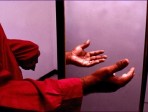 01:20:00
01:20:00
Brain function: synesthesia and phantom limbs
Professor Ramachandran examines problems that lie at the interface between neurology and psychiatry. He explains how phantom limbs may be used as a probe to understand brain functions and will also discuss synesthesia, a condition in which sounds and....
More details | Watch now 01:16:00
01:16:00
Washing dirty lab coats on the page and the stage
The drive to publish first, even the order of the authors and the choice of the journal; the collegiality and the brutal competition; grantsmanship; the still existing glass ceiling for women; Schadenfreude, even Nobel lust - these are the soul and b....
More details | Watch now 01:05:00
01:05:00
Climate change on the living Earth
Observations from around the Earth suggest that even the gloomiest predictions of climate change from the 2007 IPCC report may underestimate the seriousness of the changes due this century. In this lecture, Professor James Lovelock discusses the cons....
More details | Watch now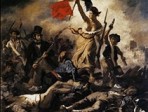 01:30:00
01:30:00
Behaving badly
Are environment, or genetics, more to blame when a human being turns to a life of crime? What does it mean to be criminally insane? And how effectively can a criminal tendency be treated with drugs? What different lights can literature and science sh....
More details | Watch now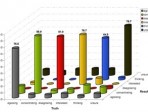 01:09:00
01:09:00
Mind-reading technologies – with People Sense
People Sense refers to the remarkable capacity of humans to sense and have a commonsense understanding of others' affective-cognitive states and behaviors. The ability to understand and predict people's behavior varies from person to person and even ....
More details | Watch now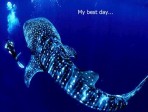 00:33:00
00:33:00
Deep sea discoveries
Recent underwater images show that the deep sea realm of the British Isles is nothing like the monotonous expanse of mud that many people imagine. Spectacular coral reefs, once thought to be restricted to the tropics, are now known to occur in the ch....
More details | Watch now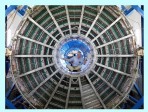 01:10:00
01:10:00
The LHC: largest experiment and smallest particles
The LHC is the most powerful particle accelerator ever built. It is capable of recreating the very energetic conditions last seen in the universe a billionth of a second after the Big Bang, and allows particle physicists to study the fundamental ingr....
More details | Watch now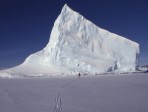 01:20:00
01:20:00
From sled dogs to rockets. Up the poles.
As part of the celebrations for International Polar Year, Paul Rose takes us on an insightful science journey to the Antarctic and the Arctic. What really are the challenges facing scientists as they work in the remotest field sites on earth?
More details | Watch now 01:15:00
01:15:00
Islam and science: beyond the troubled relationship
The basic sources of Islam - the Qur'an and the traditions of the Prophet Muhammad - place a great deal of importance on science. So, theoretically, the relationship between Islam and science is both close and very deep. It was this relationship that....
More details | Watch now 00:56:00
00:56:00
Continuing the voyages of the Endeavour
NASA Administrator Mike Griffin's address applies certain lessons learned from one of the Royal Society's greatest explorers to the endeavours NASA is carrying out today in exploring the planets, moons, asteroids, and comets of our solar system and o....
More details | Watch now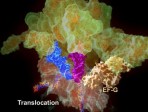 01:02:00
01:02:00
Reprogramming the code of life
The information for synthesizing the molecules that allow organisms to survive and replicate is encoded in genomic DNA. In the cell, DNA is copied to messenger RNA, and triplet codons in the messenger RNA are decoded in the process of translation to ....
More details | Watch now 01:03:00
01:03:00
Surviving pandemics: a pathogen’s perspective
One of the biggest challenges faced by pathogens in their bid for survival is the host immune response. Within an infected individual, pathogen populations face direct attack by the different processes of the immune system; at a community level, immu....
More details | Watch now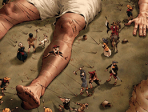 01:05:00
01:05:00
The Lilliput laboratory: chemistry & biology on the small scale
In 1959, Richard Feynman proposed a variety of new nano-tools including the concept of atom by atom' fabrication. In the intervening decades, many of these predictions have become reality. Andrew de Mello assesses the current impact of lab-on-a-chip ....
More details | Watch now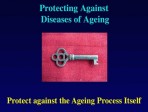 01:00:00
01:00:00
The new biology of ageing
Research into ageing has been rejuvenated by the discovery of mutations in single genes that extend the lifespan of laboratory animals. Some of the signalling pathways involved, particularly the insulin/Igf-like pathway, have effects on lifespan acro....
More details | Watch now 01:00:00
01:00:00
The social function of history: policy, history and twentieth-century science
Historians bring to thinking about science policy a very particular understanding which should be central to policy: historians are trained to know in their bones that the future is unknown and to understand the power of the cheap futurism which char....
More details | Watch now 01:06:00
01:06:00
Mathematics in the real world: From brain tumours to saving marriages
Practical mathematical models are becoming an accepted part of most medical and scientific disciplines. A few of the more unlikely applications are justifying intertribal warfare, the benefits of cannibalism, how the leopard gets its spots and demons....
More details | Watch now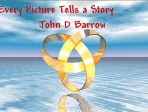 01:16:00
01:16:00
Every picture tells a story
We will look at the role of pictures and images in the development of science. From the first graphs and illustrated books to Molscript, the influence of the first pictures of spiral galaxies on Van Gogh's 'Starry Night', to the artistic resonances o....
More details | Watch now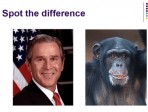 01:16:00
01:16:00
A molecular window into speech and language
Our capacity for complex speech and language remains one of the most intriguing aspects of being human. It has long been suspected that some answers to this enigma will be found buried within the genome. With recent advances in genetic technologies, ....
More details | Watch now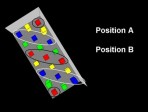 01:01:00
01:01:00
Mapping memory: the brains behind remembering
Historically memory research has focussed on the hippocampus, a structure deep in the brain's temporal lobes. Damage to the hippocampus is known to have a devastating impact on the ability to form new memories as well as compromising recollection of ....
More details | Watch now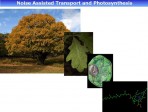 01:03:00
01:03:00
Taming the Quanta
Devices are now reaching the realm where individual structures are made up of only a few atoms so that quantum mechanics, the theory of the very small, is playing a crucial role. The inevitable quantum fluctuations produce noise which was initially e....
More details | Watch now 01:08:00
01:08:00
Plant and animal communication
Organisms of all kinds use signals comprising minute amounts of natural chemicals. The exploitation of semiochemicals is demonstrated with dramatic success in the management of pests and parasitic weeds in resource-poor East African cereal farming.
More details | Watch now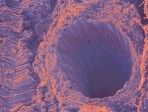 01:03:00
01:03:00
Hard questions: Contemporary art and the obsession with science
Siƒn Ede looks at the work of a number of leading artists who have engaged with contemporary science, whether robustly or subtly, in order to reflect a different and sometimes bizarre take on new ideas.
More details | Watch now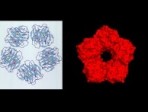 01:08:00
01:08:00
From proteins to drugs
The normal proteins which circulate in human blood are either known or presumed to have beneficial functions. However normal immunity and inflammation proteins can cause or exacerbate disease in addition to helping to resist infections.
More details | Watch now 01:16:00
01:16:00
Raman Microscopy, Pigments and the Arts/Science Interface
Raman spectroscopy is a light scattering technique primarily used in the characterisation of vibrational modes of molecules and therefore in assessing the structure and composition of materials.
More details | Watch now
